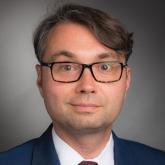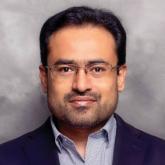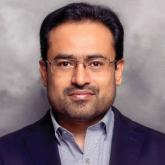Article

Treating alcohol withdrawal syndrome: Going beyond ‘benzos’
- Author:
- Huma Baqir, MD
- Sadiq Naveed, MD
- Saeed Ahmed, MD
VPA and carbamazepine may be as useful as benzodiazepines for managing alcohol withdrawal syndrome.
Article

Career Choices: Psychiatric oncology
- Author:
- Saeed Ahmed, MD
- William Pirl, MD, MPH, FACLP, FAPOS
In this Career Choices, Saeed Ahmed, MD, talked with William Pirl, MD, MPH, FACLP, FAPOS, about psychiatric oncology.
Article

Career Choices: Forensic psychiatry
- Author:
- Saeed Ahmed, MD
- Paul S. Appelbaum, MD
In this Career Choices, Saeed Ahmed, MD, Addiction Psychiatry Fellow at Boston University Medical Center/Boston University School of Medicine,...
Article

Career Choices: Academic psychiatry
- Author:
- Saeed Ahmed, MD
- Donald W. Black, MD
In this Career Choices, Saeed Ahmed, MD, Chief Resident at Nassau University Medical Center, East Meadow, New York, talked with Donald W. Black,...
Article

Career Choices: Addiction psychiatry
- Author:
- Saeed Ahmed, MD
- Cornel Stanciu, MD
In this Career Choices, Dr. Ahmed talked with Dr. Stanciu, an addiction psychiatrist who provides support to clinicians managing patients with...
Article

Helping patients quit smoking: Lessons from the EAGLES trial
- Author:
- Samantha A. Gnanasegaram, MD
- Cornel N. Stanciu, MD, MRO
- Saeed Ahmed, MD
Psychiatrists often fail to adequately address their patients’ smoking, and often underestimate the impact of ongoing tobacco use.
Article

‘Robotripping’: What residents need to know
- Author:
- Saeed Ahmed, MD
- Cornel Stanciu, MD
- Michael Esang, MBBCh, MPH
Dextromethorphan (DXM) is commonly found in over-the-counter (OTC) cold and cough preparations.
Opinion

A trainee’s path to fighting addiction
- Author:
- Saeed Ahmed, MD
Dr. Saeed Ahmed urges more residency trainees to get involved in addiction psychiatry.
Opinion

Transgender patients face mental health challenges
- Author:
- Saeed Ahmed, MD
What I thought would be a typical morning at the major county hospital – if that were ever possible on a psychiatric emergency unit (EU) – quickly...
Article

Is physician-assisted suicide compatible with the Hippocratic Oath?
- Author:
- Saeed Ahmed, MD
Do we stand by our Hippocratic Oath when providing physician-assisted suicide?Physician-assisted suicide (PAS) is a form of euthanasia in which a...
